
The original ‘mega-musical’, The Phantom of the Opera had humble beginnings in a French newspaper in 1909. Over 100 years later, Andrew Lloyd Webber’s music of the night is now a part of our cultural DNA. For the latest edition of Stage Direction, Melanie Tait unravels the “strange affair” of the musical that took over the world.
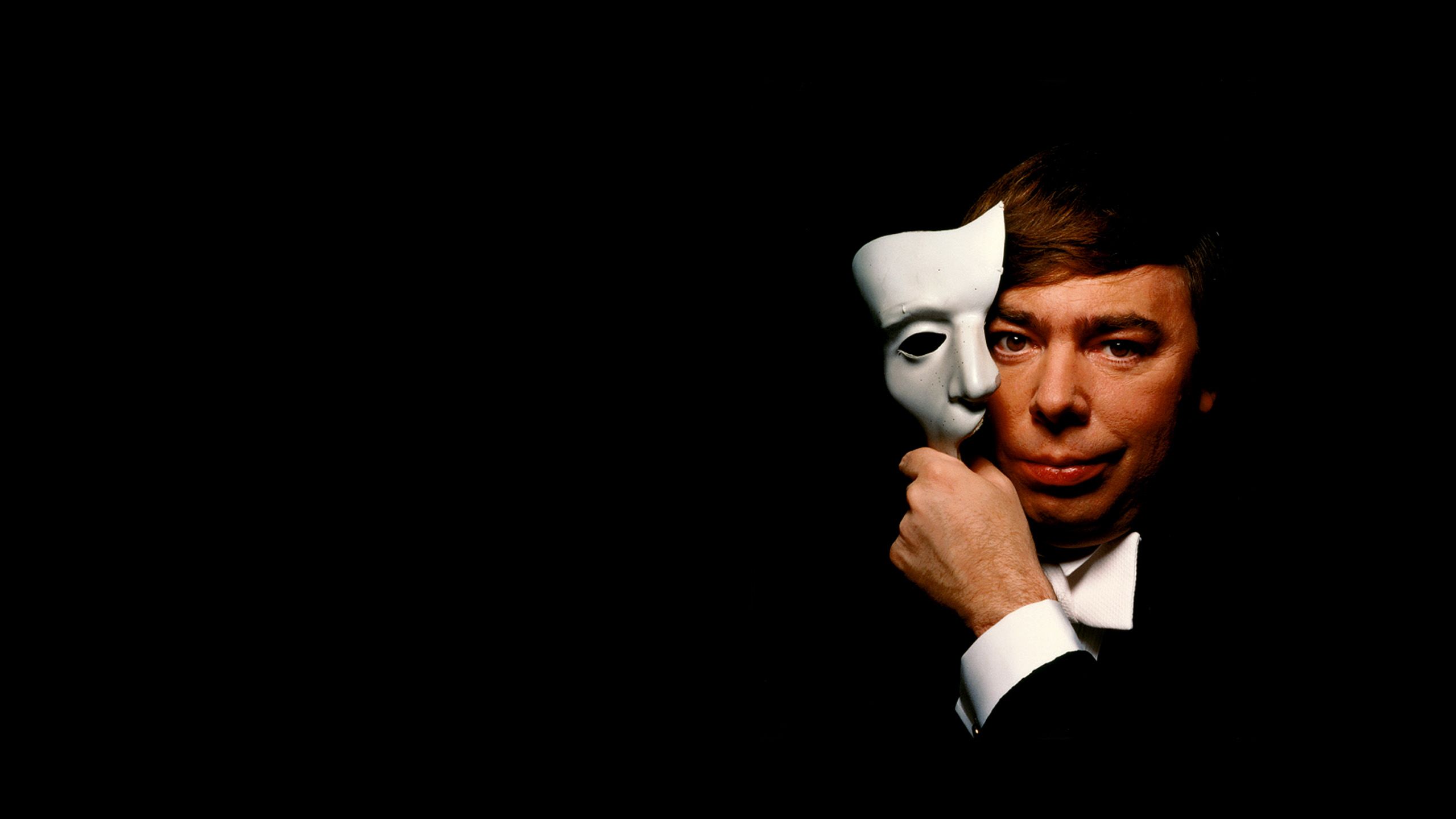
“It may be possible to have a terrible time at The Phantom of the Opera, but you’ll have to work at it.”
So began the New York Times review from famed critic Frank Rich in 1988, all but assuring The Phantom of the Opera would be the Broadway hit it already was on London’s West End.
Andrew Lloyd Webber’s musical The Phantom of the Opera is truly a global phenomenon. Since opening in London in 1986 at Her Majesty’s Theatre, it has been a hit in 39 countries, playing in 188 cities to an estimated audience of 140 million people. The original Australian production opened in 1990 and played in Melbourne for three years before transferring to Sydney. And in April this year, the upcoming Sydney season smashed Sydney Opera House single-day box office records when tickets went on sale.
So just what is it about this musical that’s made it such an epic success? And why do audiences continue to flock to it?
A mysterious backstory
The source material for the musical is the classic gothic novel by French author and journalist Gaston Leroux, Le Fantôme de l’Opéra.
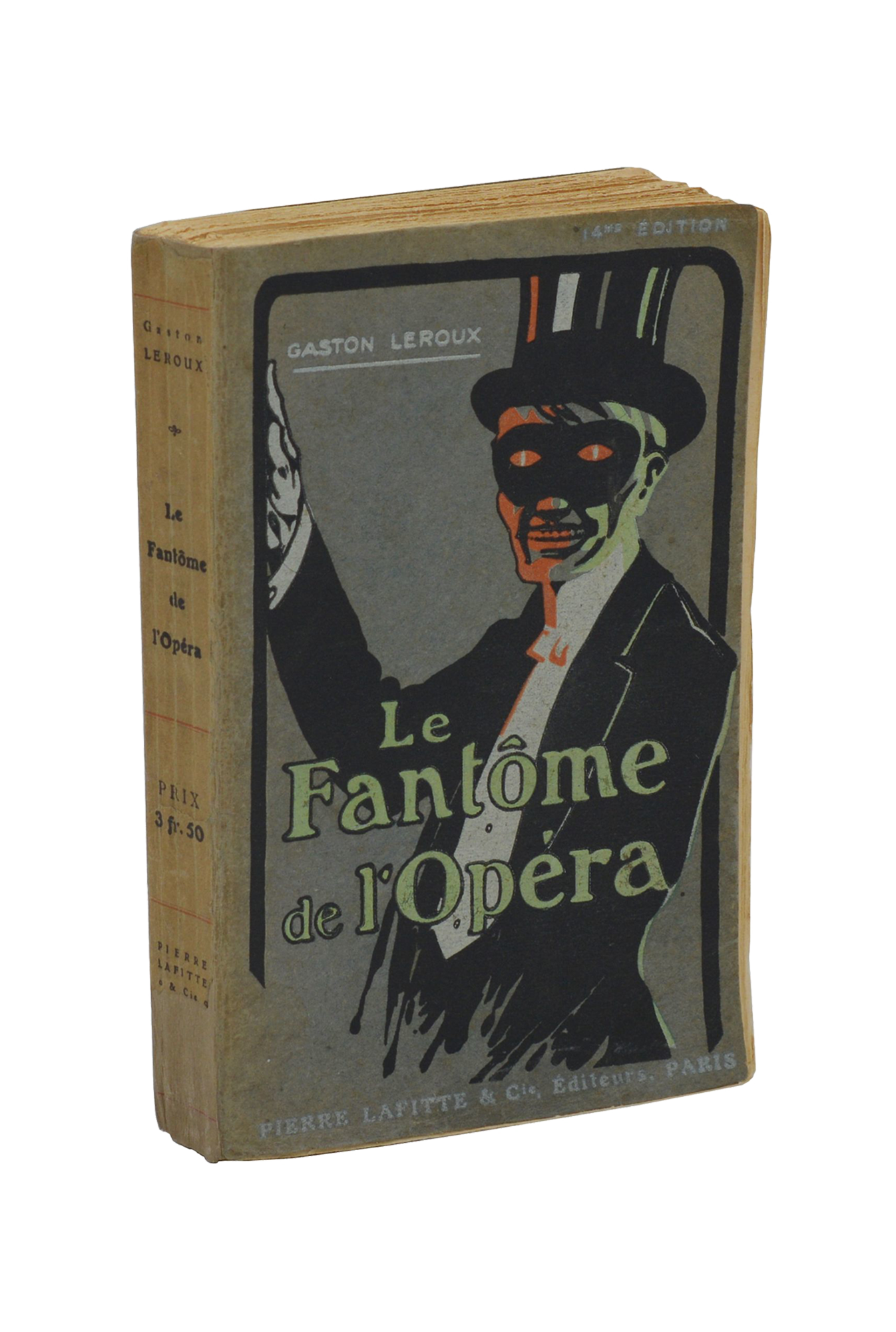
Set in what is now known as the Paris Opera (or the Palais Garnier), Leroux’s tale was originally serialised in the French daily newspaper Le Gaulois in 1909, and first published in full in 1911. The original text tells the story of the death, destruction and intrigue brought upon a sumptuous Parisian opera house by a mysterious phantom, known as the ‘Opera Ghost’.
The Opera Ghost falls madly in love with a young soprano in possession of a magical voice, Christine Daaé, and the book details the many ways he seeks to make her love him. After much drama, he lets her go after she discovers he’s not a ghost or a Phantom, but rather a deformed man named Erik with a face so disfigured it “earned a mother's fear and loathing”.

“If I am the Phantom, it is because man’s hatred has made me so. If I am to be saved it is because your love redeems me.”
Gaston Leroux, Le Fantôme de l’Opéra

Stranger than fiction
It’s difficult to know how entirely a product of Gaston Leroux’s imagination Le Fantôme de l’Opéra is.
Leroux himself had a life worthy of a novel: a shipping heir, he blew through his inheritance and became an intrepid journalist. He filed stories from Russia, Africa and across Asia, but it was his own backyard that inspired him most.
He first became fascinated by the story of the ‘opera ghost’ after hearing the tale of a chandelier falling on an audience when the Paris Opera first opened.
In an introduction he penned to the novelisation of the Le Fantôme de l’Opéra, Leroux claims (a claim he apparently stood by on his deathbed):
“The opera ghost really existed. He was not, as was long believed, a creature of the imagination of the artists, the superstition of the managers… No, he existed in flesh and blood, though he assumed all the outward characteristics of a real phantom, that is to say, of a shade.”
To this day, this is still contentious. Who’s to say whether this introduction wasn’t part of the novel's mystique, or a marketing ploy to bolster sales and titillate the press? In any case, the Phantom still has a box seat reserved expressly for him at the Opera Garnier, in Box 5, as per the original tale.

The Phantom's loge at the Paris Opera. Click to expand.
The Phantom's loge at the Paris Opera. Click to expand.
“Can you even dare to look
Or bear to think of me?
This loathsome gargoyle, who burns in hell
But secretly yearns for heaven”
‘I Remember/Stranger Than You Dreamt It’
The Phantom of the Opera

Phantom gets the Lloyd Webber treatment
In 1984, riding high from blockbuster musicals like Jesus Christ Superstar, Evita, Cats and Starlight Express, Andrew Lloyd Webber had just fallen in love with a young singer with a glorious voice: Sarah Brightman. He’d left his wife Sarah, with whom he had two children, to begin a new life with his “angel of music”, who would originate the role of Christine in both the West End and Broadway productions.
Years earlier, Brightman had been offered, and turned down, a part in a musical by the playwright and theatre director Ken Hill. The musical was called Phantom of the Opera (spot the difference in title), and unlike Lloyd Webber’s better known version 10 years later, was made up of real arias from the classical canon. Super producer Cameron Mackintosh and Lloyd Webber went to see it upon its release, describing it as ‘rather good’, and would work with Hill on developing it together, before eventually parting ways.
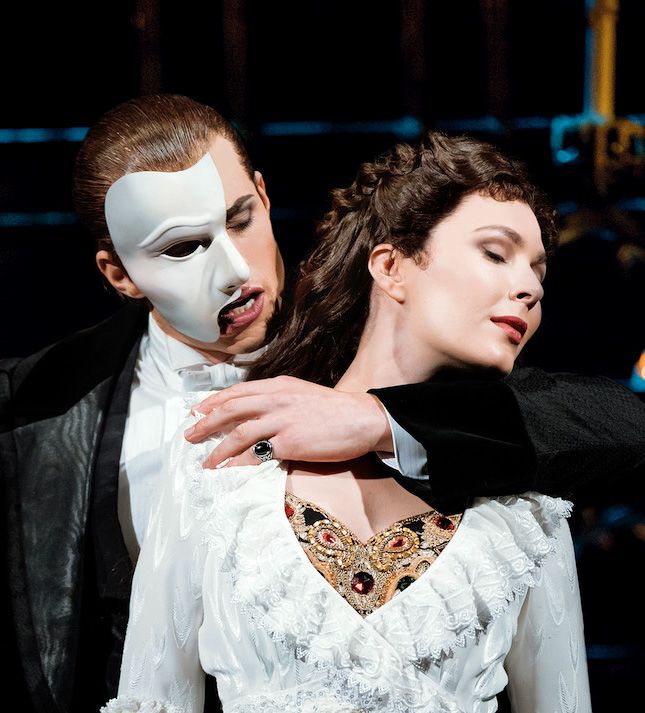
Josh Piterman (who will star as the Phantom in Opera Australia's 2021 season) and Kelly Mathieson in The Phantom of the Opera on the West End in 2019. Image: Manuel Harlan
Six months later, Lloyd Webber came across Leroux’s novel in a second hand book shop in New York City. He spent an afternoon reading it and was hooked.
He then put himself in the long line of artists who’d used the book as a source material. There have been dozens of film, television, theatrical adaptations and book spin-offs including Brian De Palma’s 1974 rock musical Phantom of the Paradise, and Terry Pratchett’s Maskerade.
By 1985, Lloyd Webber was showcasing the first act at the annual music festival he holds at his home in Sydmonton, England.
A year later, with a team of creatives at the peak of their powers, The Phantom of the Opera premiered on the West End. Broadway director Hal Prince led a team rounded out by legendary Royal Shakespeare Company designer Maria Bjornson, Cats choreographer Gillian Lynne, and comic actor Michael Crawford in a career changing role as the Phantom. It was a hit by the time the chandelier came crashing down at the end of Act 1.

Josh Piterman (who will star as the Phantom in Opera Australia's 2021 season) and Kelly Mathieson in The Phantom of the Opera on the West End in 2019. Image: Manuel Harlan
Josh Piterman (who will star as the Phantom in Opera Australia's 2021 season) and Kelly Mathieson in The Phantom of the Opera on the West End in 2019. Image: Manuel Harlan
Phantom in pop culture
From silent films to The Simpsons, the Phantom has had nearly 100 years of cultural ubiquity.
Video: The Phantom of the Opera (2004), directed by Joel Schumacher

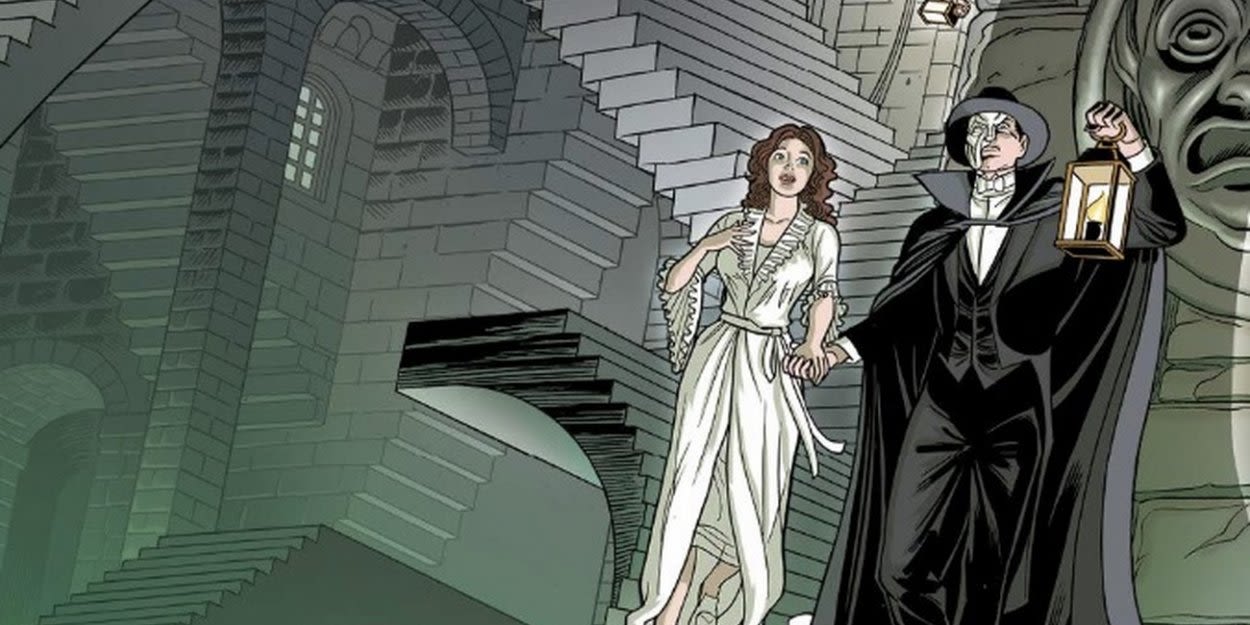
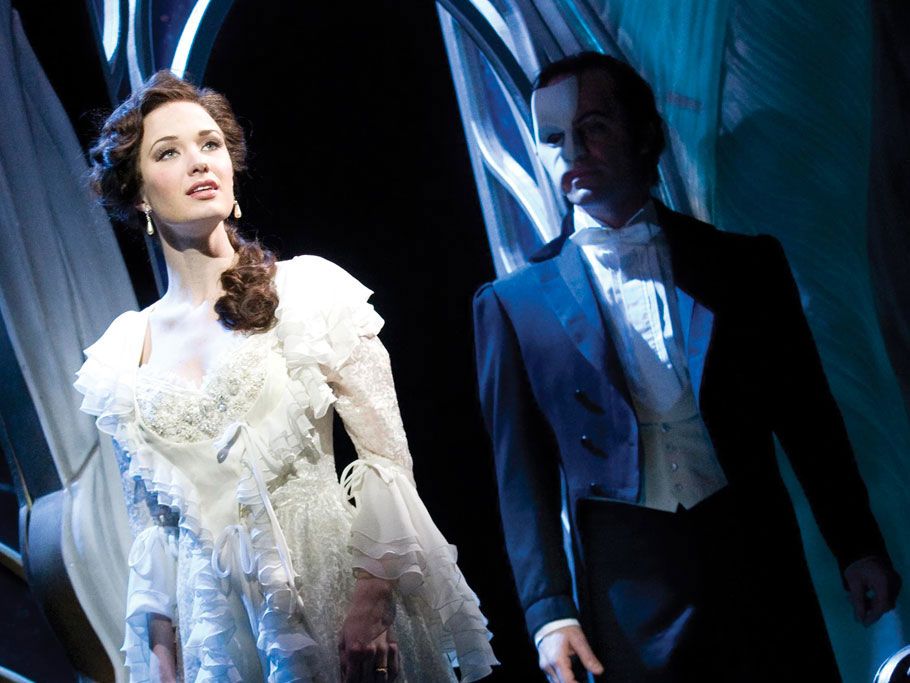

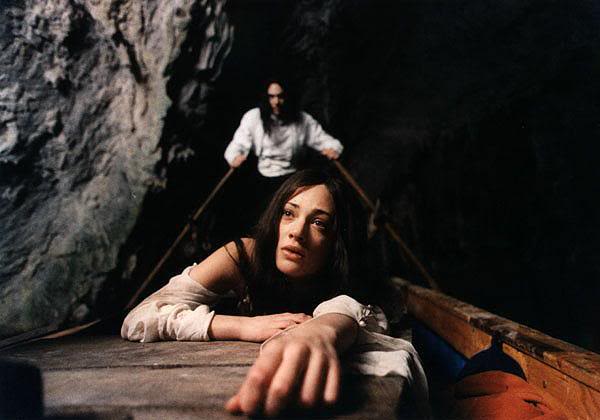



Upcoming graphic novel by Cavan Scott, The Phantom of the Opera (2021).
Upcoming graphic novel by Cavan Scott, The Phantom of the Opera.

Love Never Dies, the musical sequel to Phantom, had a short run on the West End, before being reinvented for Australian audience in 2011.
Love Never Dies, the musical sequel to Phantom, had a short run on the West End, before being reinvented for Australian audience in 2011.

Martin Prince, Jr as the phantom in The Simpsons season six episode ‘Lisa's Wedding’ (1995).
Martin Prince, Jr as the phantom in The Simpsons season six episode ‘Lisa's Wedding’ (1995).

Dario Argento's The Phantom of the Opera (1998), an Italian horror film adapted from Leroux's novel. Unlike most other adaptations of the book, the Phantom is not disfigured.
Dario Argento's The Phantom of the Opera (1998), an Italian horror film adapted from Leroux's novel. Unlike most other adaptations of the book, the Phantom is not disfigured.

Brian De Palma's Phantom of the Paradise (1974), a loose adaptation of Leroux's novel, merged with elements of Faust and The Picture of Dorian Gray.
Brian De Palma's Phantom of the Paradise (1974), a loose adaptation of Leroux's novel, merged with elements of Faust and The Picture of Dorian Gray.

Scene from the Rupert Julian silent film The Phantom of the Opera (1925), starring Lon Chaney as the deformed Phantom.
Scene from the Rupert Julian silent film The Phantom of the Opera (1925), starring Lon Chaney as the deformed Phantom.
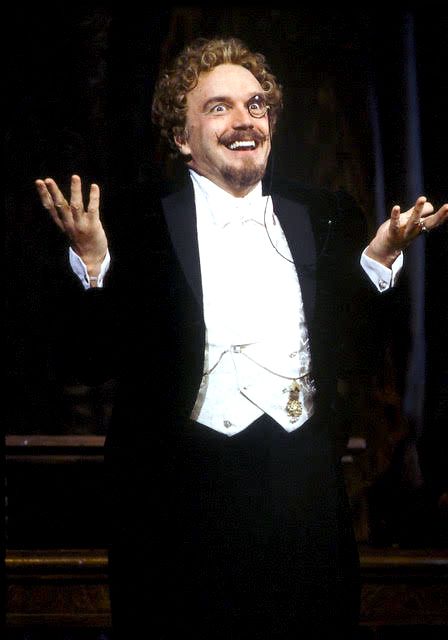
George Lee Andrews as Monsieur Firmin
George Lee Andrews as Monsieur Firmin
Living inside the biggest Broadway show of all time
When American performer George Lee Andrews joined the ensemble of the original Broadway production of The Phantom of the Opera, he’d already been earning his living on stage for some twenty years. He’d never had another job.

George Lee Andrews as Monsieur Firmin
“Eight shows a week, all that time. I learned the technique of walking out there and being alive for the first time,” he says from his home in New York, where theatres have been shut for the past fourteen months.
Lucky he had such technique, because he went on to appear in The Phantom of the Opera over nine thousand times over a period of 23 years – making him the Guiness World Record holder for the actor to perform the most in any Broadway show.
“I loved doing the show. I loved my friends in the company. I thought the show was great, but I’d get a bit crazy each winter as the commute would get to me.
“When people started leaving the show, I thought ‘we’re never going to see these people again’, so I started getting framed pictures of them and putting them on the walls below the stage. I filled up three rooms over my twenty three years on the show.”
By the time Andrews left the show, he was playing Monsieur Firmin, one of the theatre owners.
“It was a huge gift to me, and my family,” says Andrews. And surely enough, upon leaving, it was kept in the family. His replacement: his son-in-law, actor Aaron Galligan-Steirle.
“Some of you may recall the strange affair of the Phantom of the opera. A mystery never fully explained. We are told, ladies and gentleman, that this is the very chandelier that figures in that famous disaster.”
Auctioneer in The Phantom of the Opera at the Royal Albert Hall - 2011 (pictured)
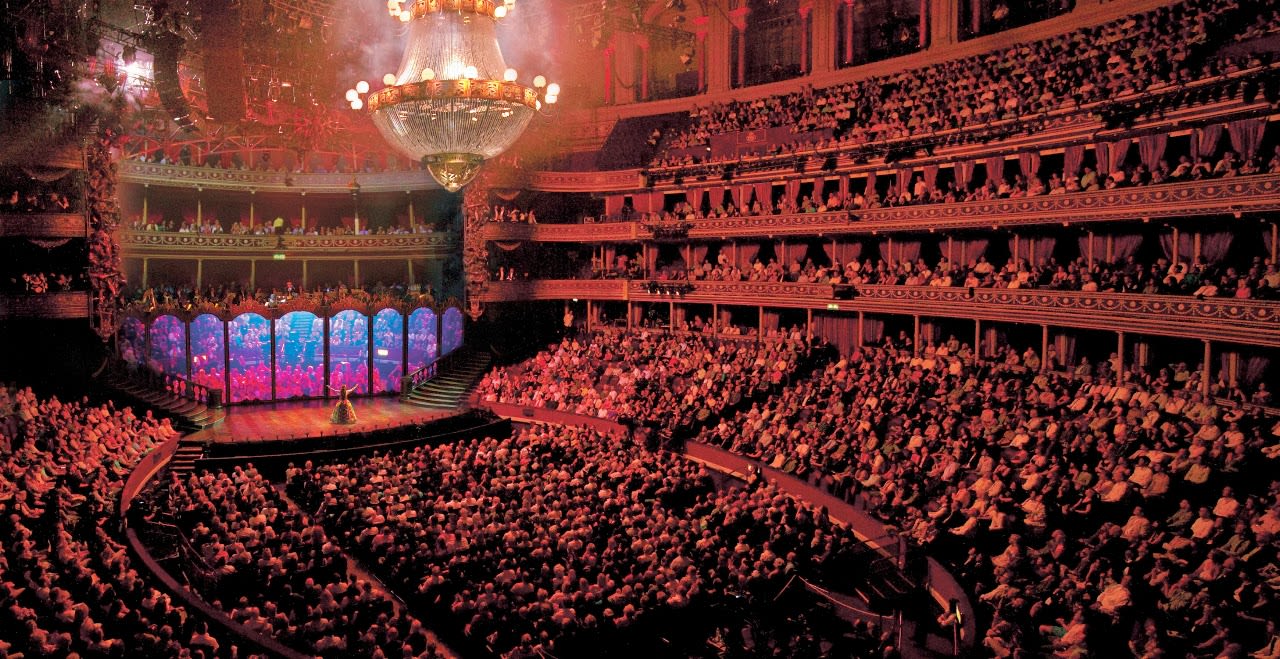
Pleasing the ‘Phans’
Australian actress Maree Johnson also has a long association with Phantom.
Joining the ensemble of the original Australian production, she took over the role of Christine Daaé from the legendary Marina Prior in Sydney. Then, up until COVID-19 hit, Johnson was playing Madame Giry on Broadway (a role which she returned to for The Phantom of the Opera on Sydney Harbour in March 2022).
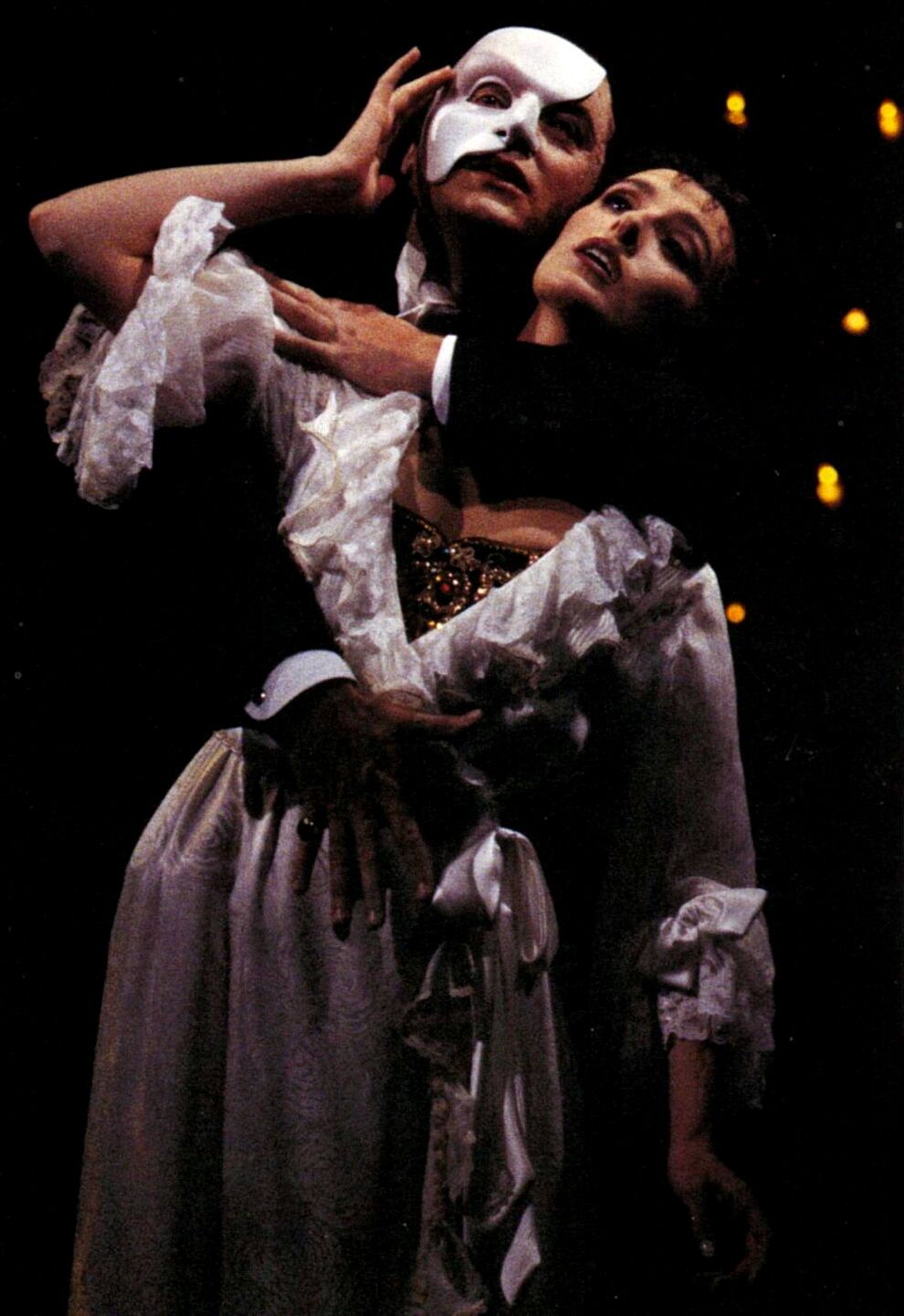
Maree Johnson as Christine in The Phantom of the Opera
“Playing Christine was an incredible opportunity so early in my career. It gave me a very solid foundation which allowed me to grow and thrive as a performer. Playing such an iconic role in my hometown of Sydney, also added something extra special – it was a very proud moment in my life. As it is now being on Broadway – that is, under normal circumstances...”
She’s experienced audiences of the show in Australia and New York.
“...from the moment [fans] buy their tickets, they are fully committed and ready for the Phantom experience. The ‘Phans’ as we like to call them, are still passionate.”

Maree Johnson as Christine in The Phantom of the Opera
Maree Johnson as Christine in The Phantom of the Opera
Why Phantom now, in Sydney?
From the moment the lights dim and gavel hits the soundblock, we’re transported into a world that’s completely alien from the one we’re living outside the doors of the Joan Sutherland Theatre. And when the organ blasts out those iconic first chords, there’s an unmistakable recognition and excitement: we know we’re about to be part of a magical experience.
It’s dark, moody, heightened escapism, masterful entertainment, in a time when we need to spend a few hours in the theatre to be entertained and forget the world outside.
By now, the melodies are in our cultural DNA. They’ve made stars out of generations of performers. They’ve kept alive the mystery of a Phantom at the Paris Opera. To hear them live from an orchestra, with a talented company of match fit performers, put on by the wonderful Opera Australia, is a gift we’re lucky to have here in Sydney.
“The Phantom of the Opera is about love. It’s as simple as that.”
Andrew Lloyd Webber

